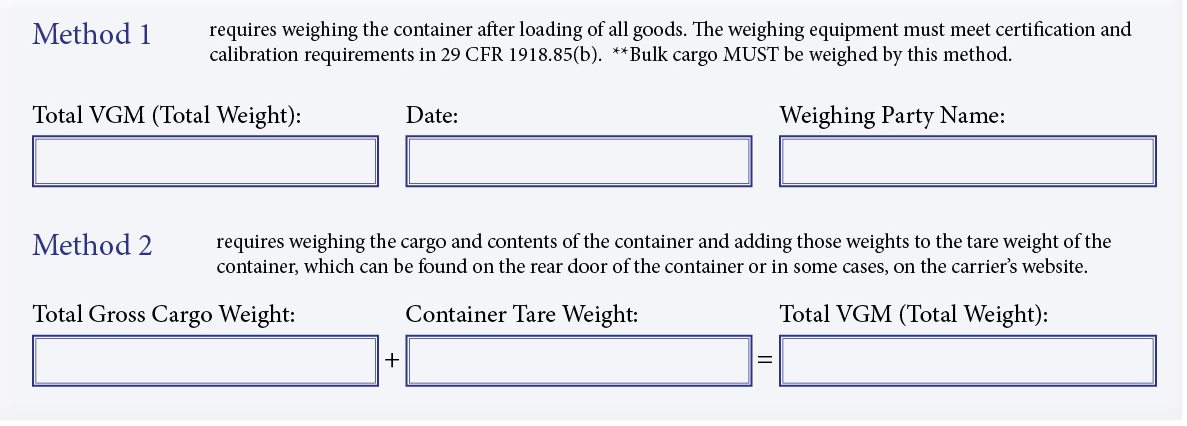Scarbrough launches VGM Submission Service
Scarbrough launches VGM Submission Service
Scarbrough is pleased to provide a support service to clients which enables the electronic submission of required VGM data to the appropriate carrier in a timely and compliant fashion.
Scarbrough has been at the forefront of information on a variety of industry topics including the SOLAS Verified Gross Mass requirement that will be implemented on July 1, 2016.
In response to a number of reasons pertaining to damages to equipment and the environment, the International Maritime Organization plans to enforce the declaration of information based on total cargo and tare weight of containers prior to loading on a vessel. Carriers have announced a “No VGM, No Load” policy. This requirement will begin on July 1, 2016. Enforcement of the requirement will not occur until October 1, 2016.
Adam Hill, Vice President of Operations at Scarbrough International, Ltd. and Scarbrough de México de S. de R.L. de C.V. states,
“We urge our clients to submit “verified gross mass,” or total cargo + tare weight of the container when the shippers’ letter of instructions are issued to Scarbrough in order to stay proactive. Shippers must use reasonable care and comply with the IMO’s recent amendment to avoid delays in their supply chain. We suggest shippers to submit their data to Scarbrough as soon as the container is loaded.”
There are 2 acceptable methods to submit weight.
Method 1: requires weighing the container after loading of all goods. Many ports are offering a weighing service at the terminal prior to loading the container on the vessel. Shipper can also weigh container over a weigh bridge, then subtract the weight of the truck, chassis and fuel to get the weight of the packed container.
The weighing equipment used in Method 1 must meet certification and calibration requirements. All certified container-weighing equipment currently now in use in the U.S.A. and in compliance with federal or state laws, including the Intermodal Safe Container Transportation Act and the container weight requirements in 29 CFR 1918.85(b) is allowed and considered compliant with the SOLAS regulation.
**Bulk cargo such as scrap metal, unbagged grain MUST be weighed by this method.
Method 2: requires weighing the cargo and contents of the container and adding those weights to the tare weight of the container, which can be found on the rear door of the container or in some cases, on the carrier’s website. Note: No weight estimation allowed.
Shippers are required to provide verified weights obtained on calibrated, certified equipment of all cargo that is to be tendered to steamship lines. Scarbrough is entitled to rely on the accuracy of such weights and to counter-sign or endorse it as an agent of our clients in order to provide the certified weight to the steamship lines. Furthermore, if containers are to be weighed at the terminal, the “top U.S. maritime regulator said container lines should use current procedures of weighing containers to meet the requirements of the rule and avoid hampering exporters’ supply chains.” [Source]
Scarbrough continually guides clients to ensure compliant nature, and offers a variety of support tools including a recorded Question/Answer Session on its YouTube channel.
Feel free to contact us with any questions: info@scarbrough-intl.com.
Again, Scarbrough is pleased to provide this service to clients which enables the electronic submission of required VGM data to the appropriate carrier in a timely and compliant fashion. We ask that our clients submit their information one of 2 ways: Bill of Lading Form or VGM Declaration Form.

